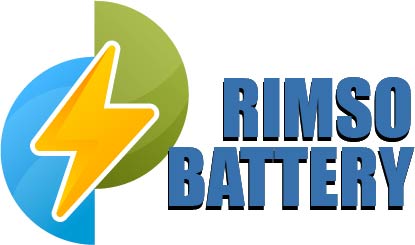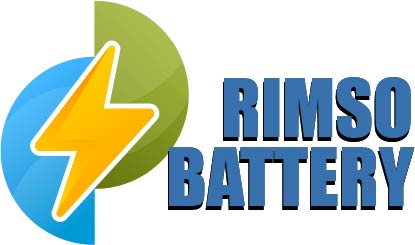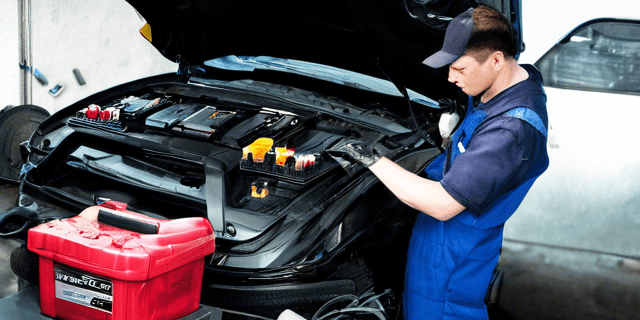Common Problems Lead Acid Batteries are reliable and cost-effective, but they are not without their challenges. Over time, users may encounter issues that impact performance and lifespan. In this guide, we’ll explore the most common problems with lead-acid batteries, their causes, and how to fix them. Whether you’re a beginner or an experienced user, Rimsobattery can help you maintain and troubleshoot your batteries effectively.
1. Sulfation
What is Sulfation?
Sulfation occurs when lead sulfate crystals build up on the battery plates, reducing its ability to charge and hold power. This is often caused by undercharging or leaving the battery unused for long periods.
How to Fix It
- Use a desulfation charger designed to break down sulfate crystals.
- Ensure the battery is charged regularly to prevent sulfation.
2. Corroded Terminals
What Causes Corrosion?
Corrosion on battery terminals is typically caused by exposure to acid fumes or moisture. It can lead to poor electrical connections and reduced performance.
How to Fix It
- Clean the terminals with a mixture of baking soda and water.
- Apply petroleum jelly or a terminal protectant to prevent future corrosion.
3. Overcharging
What is Overcharging?
Overcharging occurs when a battery is charged beyond its capacity, causing excessive heat and damage to the plates. This often shortens the battery’s lifespan.
How to Fix It
- Use a smart charger that automatically stops charging once the battery is full.
- Monitor the charging process to avoid prolonged charging Common Problems Lead Acid Batteries.
4. Acid Stratification
What is Acid Stratification Common Problems Lead Acid Batteries?
Acid stratification happens when the electrolyte separates into layers, with a heavier concentration of acid at the bottom Common Problems Lead Acid Batteries. This reduces the battery’s efficiency and can cause premature failure Common Problems Lead Acid Batteries.
How to Fix It
- Perform an equalization charge to mix the electrolyte evenly.
- Regularly use the battery to prevent stratification.
5. Deep Discharge
What is Deep Discharge Common Problems Lead Acid Batteries?
Deep discharge occurs when a battery is drained of its power completely. Repeated deep discharges can damage the plates and reduce capacity.
How to Fix It
- Avoid letting the battery discharge below 50% of its capacity.
- Recharge the battery promptly after use.
6. Physical Damage
What Causes Physical Damage?
Cracks, leaks, or bulges in the casing can result from mishandling, extreme temperatures, or manufacturing defects Common Problems Lead Acid Batteries.
How to Fix It
- Inspect the battery for visible damage and replace it if necessary Common Problems Lead Acid Batteries.
- Store and use the battery within its recommended temperature range.
Trust Rimsobattery for Your Lead-Acid Battery Needs
At Rimsobattery, we understand the challenges users face with lead-acid batteries. That’s why we offer high-quality products, expert advice, and maintenance tips to help you keep your batteries in top condition. Whether you’re dealing with sulfation, corrosion, or any other issue, Rimsobattery has the solutions you need Common Problems Lead Acid Batteries.
Conclusion
Lead-acid batteries may have their issues, but with the right knowledge and tools, most problems can be easily resolved. By following the tips in this guide and using reliable products from Rimsobattery, you can ensure your batteries deliver optimal performance for years to come.
Common Problems Lead Acid Batteries are reliable and cost-effective, but they are not without their challenges. Over time, users may encounter issues that impact performance and lifespan. In this guide, we’ll explore the most common problems with lead-acid batteries, their causes, and how to fix them. Whether you’re a beginner or an experienced user, Rimsobattery can help you maintain and troubleshoot your batteries effectively.
1. Sulfation
What is Sulfation?
Sulfation occurs when lead sulfate crystals build up on the battery plates, reducing its ability to charge and hold power. This is often caused by undercharging or leaving the battery unused for long periods.
How to Fix It
- Use a desulfation charger designed to break down sulfate crystals.
- Ensure the battery is charged regularly to prevent sulfation.
2. Corroded Terminals
What Causes Corrosion?
Corrosion on battery terminals is typically caused by exposure to acid fumes or moisture. It can lead to poor electrical connections and reduced performance.
How to Fix It
- Clean the terminals with a mixture of baking soda and water.
- Apply petroleum jelly or a terminal protectant to prevent future corrosion.
3. Overcharging
What is Overcharging?
Overcharging occurs when a battery is charged beyond its capacity, causing excessive heat and damage to the plates. This often shortens the battery’s lifespan.
How to Fix It
- Use a smart charger that automatically stops charging once the battery is full.
- Monitor the charging process to avoid prolonged charging Common Problems Lead Acid Batteries.
4. Acid Stratification
What is Acid Stratification Common Problems Lead Acid Batteries?
Acid stratification happens when the electrolyte separates into layers, with a heavier concentration of acid at the bottom Common Problems Lead Acid Batteries. This reduces the battery’s efficiency and can cause premature failure Common Problems Lead Acid Batteries.
How to Fix It
- Perform an equalization charge to mix the electrolyte evenly.
- Regularly use the battery to prevent stratification.
5. Deep Discharge
What is Deep Discharge Common Problems Lead Acid Batteries?
Deep discharge occurs when a battery is drained of its power completely. Repeated deep discharges can damage the plates and reduce capacity.
How to Fix It
- Avoid letting the battery discharge below 50% of its capacity.
- Recharge the battery promptly after use.
6. Physical Damage
What Causes Physical Damage?
Cracks, leaks, or bulges in the casing can result from mishandling, extreme temperatures, or manufacturing defects Common Problems Lead Acid Batteries.
How to Fix It
- Inspect the battery for visible damage and replace it if necessary Common Problems Lead Acid Batteries.
- Store and use the battery within its recommended temperature range.
Trust Rimsobattery for Your Lead-Acid Battery Needs
At Rimsobattery, we understand the challenges users face with lead-acid batteries. That’s why we offer high-quality products, expert advice, and maintenance tips to help you keep your batteries in top condition. Whether you’re dealing with sulfation, corrosion, or any other issue, Rimsobattery has the solutions you need Common Problems Lead Acid Batteries.
Conclusion
Lead-acid batteries may have their issues, but with the right knowledge and tools, most problems can be easily resolved. By following the tips in this guide and using reliable products from Rimsobattery, you can ensure your batteries deliver optimal performance for years to come.





